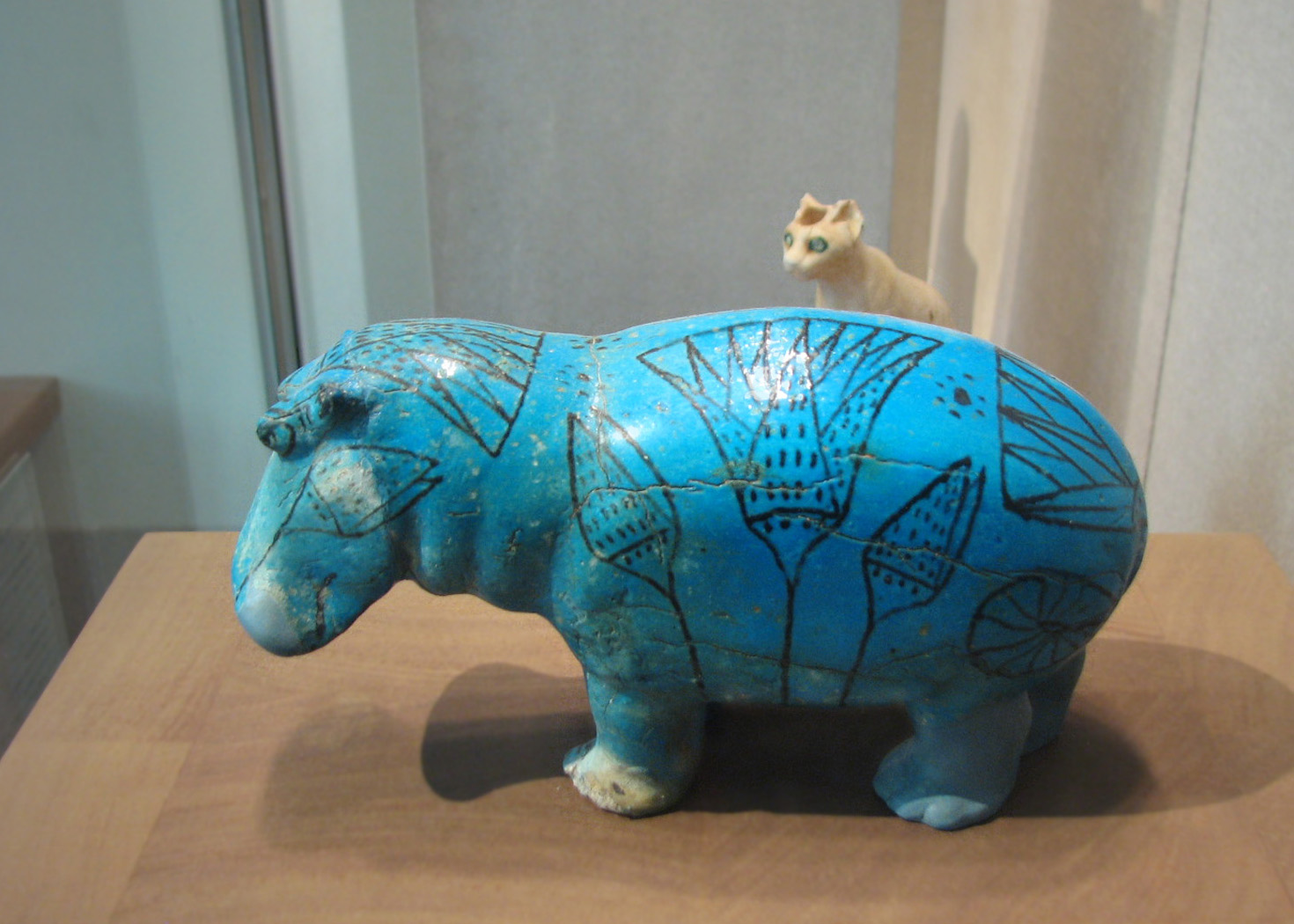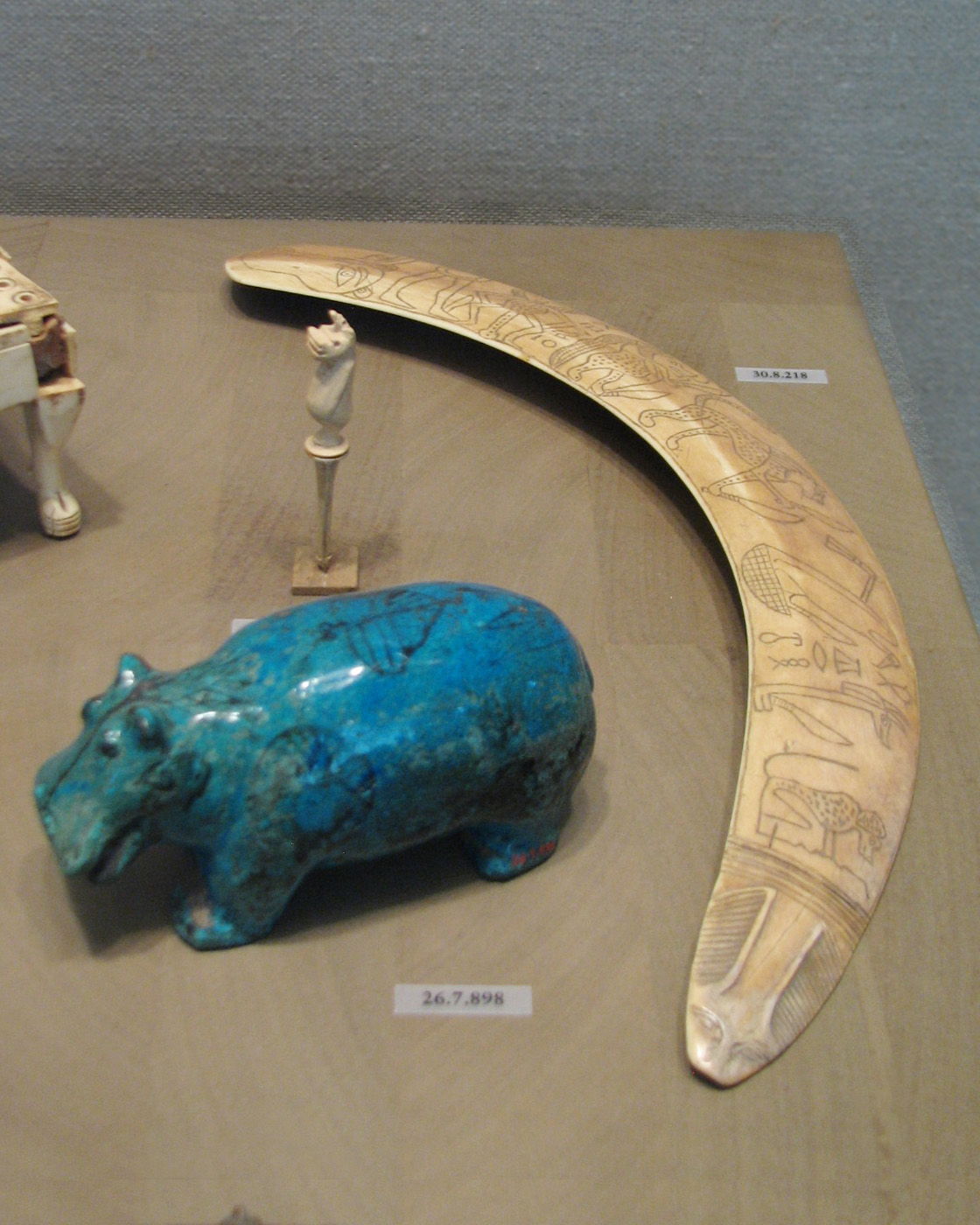
Hippopotamus ("William")
First half of Dynasty 12 (ca. 1981-1885 BCE)
Faience; three legs and part of snout restored
From Meir, tomb B3, pit A; Said Bey Khashaba excavations, 1910
Gift of Edward S. Harkness, 1917 (17.9.1)

Hippopotamus ("William")
First half of Dynasty 12 (ca. 1981-1885 BCE)
Faience; three legs and part of snout restored
From Meir, tomb B3, pit A; Said Bey Khashaba excavations, 1910
Gift of Edward S. Harkness, 1917 (17.9.1)
|
(From the info card) "The hippotamus was one of the most dangerous animals of the Nile Valley, feared by sailors and farmers alike, but it was also believed to be a powerful, magical protector against evil. Both aspects are present here: three of the animal's legs were broken off when the figure was deposited in the tome, in order to incapacitate the beast; and water lilies ('lotuses') were painted on the body to indicate the hippo's environment and to associate it with the rejuventating forces that Egyptians believed were inherent in the plant. The figure was excavated along with the canopic box of Senbi (gallery 9) in a burial crypt that also contained another hippotamus figure, three boats, and a model of a combined granary and brewerey workship (the present whereabouts of therse other objects are unknown)" The long teeth of the hippo were smoothed and carved with magically protective images, as seen below and also another page. |
